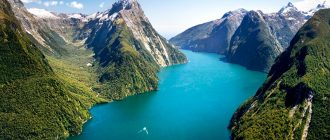Cirali (Turkey) – the most detailed information about the resort village with photo. The main attractions are Cirali with a description, guides and maps.
Чıralı (Turkey)
Ираıralı is a small resort village in southeastern Turkey near Kemer. Known for the magnificent coast, which considered one of the cleanest places in the Mediterranean. Beach Cirali has a length of 3.2 km and a width of 50 to 100 meters. is he rises from the sea with a gentle slope and is bounded by rocks. Usually the beach has fine-grained and pleasant pebbles, as well as very clean water with emerald or azure shimmer.
Cirali is a very popular place to stay. Until 1960 there were only three houses here. Now this village with narrow streets in the holiday season is filled with people and cars. There are no big ones in Cirali hotels. Here you can rent for living only comfortable campgrounds and pensions, in the rooms (houses) of which there is a shower, toilet, refrigerator, split system, kettle and a minimum set of dishes.
Ираıralı is a magnificent natural and historical landscape surrounded by ancient cities. Also this area is a place breeding sea (head) turtles – loggerhead. Turtles lay eggs from May to August, so it’s best not to drive and not walk on the beach late at night during the nesting and hatching period
 Cirali Beach
Cirali Beach
How to get to Cirali
Antalya International Airport – the nearest major air a port served by low-cost flights from Istanbul and other major European cities. To get to Cirali you need to do following:
- At the airport, take the bus 600, which comes to Antalya bus station (ticket price – 1.75 TL).
- At the bus station, find Ilce Terminali and Cicek bus companies Tur or Bati Antalya to buy tickets to Cirali (cost ticket – 12 TL).
- In Cirali, take a minibus (dolmush) and report the name accommodations to the driver who takes you there in about 6 Tl.
 Estuary at the ruins of Olympos
Estuary at the ruins of Olympos
sights
 Olympos
Olympos
Olympos is an ancient Lycian-Roman city founded in the 3rd century BC. AD At one time he was also one of the six leading cities of Lykia. In the 1st century BC. Olympos was captured by pirates who took under control is also nearby Phaselis. Pirates robbed ships and abducted locals and travelers for ransom or sales into slavery. In 78 BC Olympos was destroyed when stormed by the Romans. In the Roman period the city was an important port and reached significant prosperity. Olympos declined in the period Byzantium.
Now Olympos is a ruin, some of which are still pore not cleared. The cost of the visit is 20 TL.
Interesting features:
- The necropolis on the south side of the river contains stone tombs, embedded in the rock. Northeast of the necropolis are the remains a small overgrown roman theater. Northeast of the theater there are ruins of the late Roman church. Hellenistic embankment on the southern coast leads to the ruins of a barn built during the reign of Adriana On the edge of the beach along the mouth of the river at the south entrance are two well preserved tombs.
- The path to the north of the river leads to the entrance to the Ionic temple. Nearby are also the remains of the basilica of the Byzantine era. If a continue along the pedestrian walkway to the north, to the right you can see the remains of several well-restored buildings Roman Byzantine era. On the other side of the river the trail leads to west to the complex of Roman baths, the ruins of which are hidden vegetation.
 Chimera
Chimera
Chimera (Yanartas) is an interesting natural phenomenon that is an open fire that has been burning for several thousand years on the slopes of the mountain Yanar. This phenomenon was first described by the Byzantine priest Methodius in the 4th century BC. According to legend, the ancient Greek hero locked fire-breathing inside the mountain monster – chimera. In fact, the fire arose naturally way, and the fire burns thanks to a gas mixed with methane.
It is best to climb Mount Yanartash in the evening when it’s best just visible lights on its slopes. Be sure to wear comfortable shoes and bring flashlights (or smartphones). Visit this tourist attraction is free. The path takes 15 – 25 minutes depending on the physical form (you have to go up the hill about 1 km).






